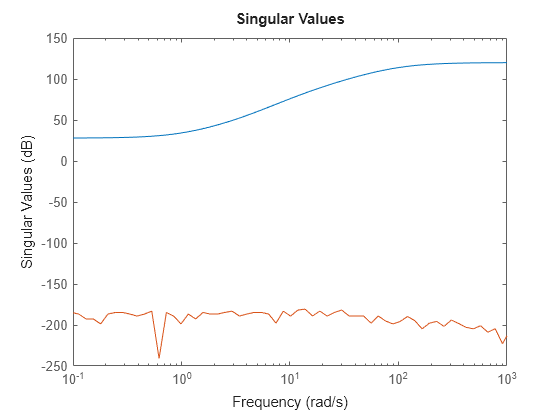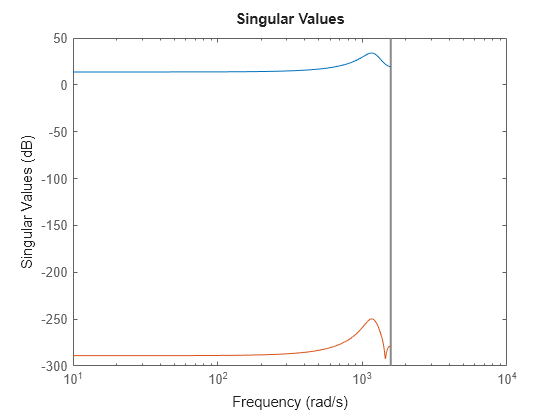spectralfact
Spectral factorization of linear systems
Description
[ computes the spectral
factorization:G,S] =
spectralfact(H)
H = G'*S*G
H = H'. In this factorization, S is
a symmetric matrix and G is a square, stable,
and minimum-phase system with unit (identity) feedthrough. G' is
the conjugate of G, which has transfer function G(–s)T in
continuous time, and G(1/z)T in
discrete time.Examples
Input Arguments
Output Arguments
Tips
spectralfactassumes thatHis self-conjugate. In some cases whenHis not self-conjugate,spectralfactreturnsGandSthat do not satisfyH = G'*S*G. Therefore, verify that your input model is in fact self-conjugate before usingspectralfact. One way to verifyHis to compareHtoH - H'on a singular value plot.sigmaplot(H,H-H')
If
His self-conjugate, theH - H'line on the plot lies far below theHline.
Version History
Introduced in R2016a



